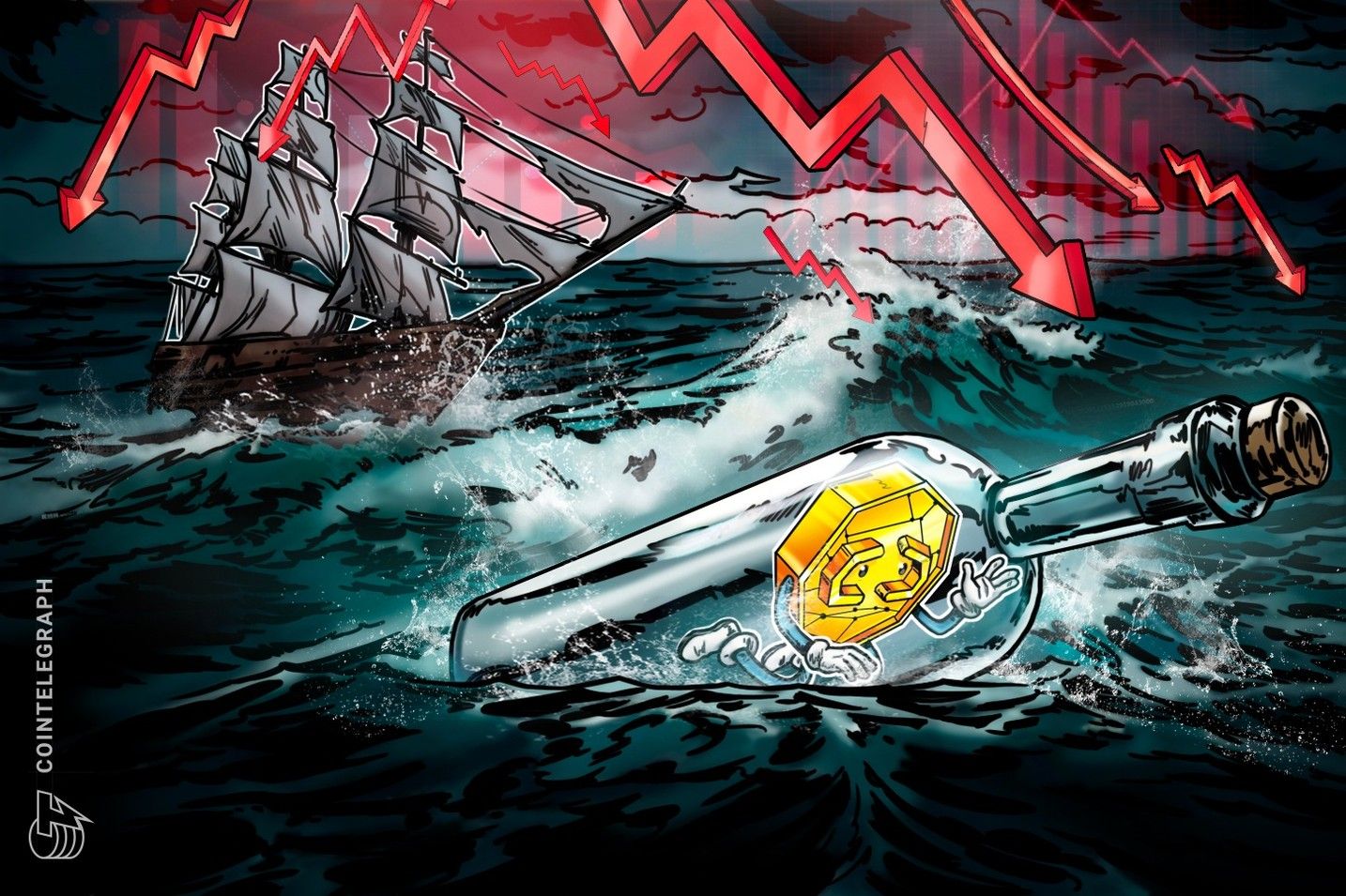Crypto for Advisors: Crypto’s Role in Portfolios
In today’s "Crypto for Advisors" newsletter, Rusty Vanneman discusses the role of crypto in a portfolio along with factors for advisors to consider regarding investment types.
Then, in "Ask an Expert," Wojciech Kaszycki answers questions about including cryptocurrencies in portfolios.
– Sarah Morton
How to Use Crypto in Portfolios
Executive Summary
As someone who has worn different hats over the years — chief investment officer, portfolio manager, and head of due diligence for third-party strategies, sometimes all at once — I’ve seen a wide range of approaches to using cryptocurrencies, particularly bitcoin, in investment portfolios. With the asset class’s rapid growth and increasing institutional adoption, every asset and portfolio manager must now answer the same question: How should digital assets fit into a multi-asset allocation?
- Mandate clarity and risk discipline are essential — volatility, correlations, and tracking-error risk must all align with what a portfolio promises to deliver.
- Direct or indirect exposure can be valid, depending on a manager’s expertise and philosophy, but the long-term case for strategic, modest allocations is strengthening.
A New Tool in the Asset-Allocator’s Kit
From an allocator’s perspective, having a new asset class is exciting. But first things first: Can adding digital assets enhance long-term, risk-adjusted returns? Historically, yes. The forward-looking answer depends on continued market development.
The right approach always depends on a portfolio’s mandate. What did the portfolio promise its investors? What outcomes and behaviors should it deliver? Any new asset — including bitcoin — must be evaluated against those commitments.
Correlations, Risk, and Portfolio Roles
For me, the most important characteristic of any asset class is its risk profile — not just in isolation, but in relation to the other assets in the portfolio. Low or declining correlations to traditional stocks and bonds are especially valuable. Bitcoin has shown moments of “risk-on” behavior and moments where it acts as a hedge, but its long-term correlation trend is moving lower. That’s appealing.
Given today’s vulnerabilities in equities (high valuations) and fixed income (inflation, debt, and credit concerns), any asset with a differentiated return stream deserves serious fiduciary consideration.
Still, mandates matter — and so does volatility. While digital asset volatility has moderated as the market has grown and institutional involvement has deepened, it remains high. That can constrain risk budgets or limit potential position sizes.
Another consideration is tracking-error risk — the degree to which an asset behaves differently from the “TV Benchmarks” like the Dow, S&P 500, and Nasdaq. When an asset significantly diverges from those benchmarks, especially during periods of relative weakness, many investors find it psychologically difficult to hold. This challenge applies to all alternatives, crypto included.
When the groundwork for mandates, expectations, and communication is well laid, digital assets can earn a place in diversified portfolios. They have historically improved outcomes, and I believe they will continue to do so as the market matures.
As for allocation size, my view is that a long-term strategic weight in the low single digits is appropriate for most diversified portfolios — at least until the asset class’s volatility moves materially lower, which I expect will happen over time.
Indirect Exposure Still Matters
Some high-quality portfolio managers who believe in the digital asset story choose not to invest directly. Instead, they gain exposure through companies and infrastructure providers positioned to benefit from digital asset adoption. This is a perfectly valid approach — especially when a manager’s core strengths lie in equity research and portfolio construction.
Closing
Digital assets are no longer theoretical — they’re investable, increasingly institutional, and here to stay. Whether accessed directly or indirectly, they deserve thoughtful consideration within the broader asset-allocation framework.
- Rusty Vanneman, chairman, Advisory Board of Main Management
Ask an Expert
Q: How should advisors manage risks associated with digital assets?
A: Advisors should start with a formal cryptoassets policy that sets clear limits on allocation (e.g., max percentage of portfolio), approved instruments (spot, exchange-traded products, funds), counterparties, and custody standards (e.g., qualified custodians), in line with emerging regulation.
They should run proper risk assessments (market, liquidity, operational, cyber, legal) and use stress tests and scenario analysis specific to crypto’s volatility, rather than treating it like a traditional equity sleeve. Finally, ongoing client education and documentation are crucial: explain risks in plain language, document suitability and risk tolerance decisions, and regularly revisit them as regulations and products evolve.
Q: Should diversification among digital assets go beyond blue-chip?
A: In most cases, yes, but only after a solid core in “blue chips” like BTC and ETH, which still anchor most institutional crypto allocations.
Beyond that, limited, clearly risk-aware exposure to selected alt-layers (L1/L2), DeFi, infrastructure tokens, stablecoins, and tokenized real-world assets can improve diversification, as long as liquidity, regulatory, and counterparty risks are acceptable.
Q: What is the importance of active investing in digital assets as opposed to the outdated passive investment formula?
A: In crypto, “set and forget” passive baskets can quickly accumulate dead or delisted tokens, because the technology, regulation, and market structure move faster than traditional equity indices.
Active management (underwriting) assets, such as regulatory changes, tokenomics, and competition, help advisors rotate out of obsolete projects and manage idiosyncratic risk while still using passive tools (ETFs, indices) as building blocks. This doesn’t mean daytrading; it means ongoing research, rebalancing, and governance rather than blindly tracking yesterday’s index.
Q: What are the key indicators behind a strong digital asset and proper management of investments in the digital landscape?
A: A strong digital asset usually has a clear purpose, proven security, growing real usage (transactions, users), and a sensible, transparent supply structure.
Advisors should check that the asset is sufficiently liquid to enter and exit, and that the issuer or foundation operates in line with basic regulatory and security standards. In portfolios, this translates into simple rules: max position sizes, only liquid assets, and regular reviews to decide whether to keep, add, or exit.
- Wojciech Kaszycki, chief strategy officer, BTCS SA
Keep Reading
- New Report: Digital asset adoption in APAC is exponentially outpacing global rates.
- New Zealand will include digital currency and crypto in its education plan starting in 2026.
- Canada gets a stablecoin: QCAD becomes the nation’s first compliant stablecoin.
- Texas becomes the first U.S. state to buy bitcoin.
Disclaimer: The content of this article solely reflects the author's opinion and does not represent the platform in any capacity. This article is not intended to serve as a reference for making investment decisions.
You may also like
Bitcoin sees ‘significant step forward’ as $97K BTC price targets return

What’s behind the surge in privacy tokens as the rest of the market weakens?

Bitcoin Updates: Institutional Investors Drive Bitcoin ETF Boom Amid Growing Optimism for Rate Cuts
- Bitcoin ETFs saw $238M net inflows on Nov 21 after a record $903M outflow, signaling institutional stabilization amid volatile markets. - Fed rate cut expectations and Abu Dhabi's tripled IBIT holdings highlight Bitcoin's growing role as a macro-hedge and reserve asset. - Technical indicators suggest $90K-$92K resistance could be broken if daily inflows exceed $200M, potentially pushing BTC toward $100K by early 2026. - Asian institutional buyers consistently inject $150M weekly, contrasting U.S. retail

XRP News Today: Individual Investors Snap Up Last XRP Tundra Shares Ahead of Institutional Phase
- XRP Tundra emerges as a bear market hedge, leveraging dual-chain architecture on XRP Ledger and Solana to offer institutional-grade DeFi infrastructure. - Institutional acquisition accelerated its December 15 launch, establishing a $0.01 retail allocation window amid full KYC and smart-contract audits. - The project's structured yield model and cross-chain capabilities align with growing institutional interest in XRP, contrasting altcoins' struggles in a tightening crypto market. - Tundra's governance (T

